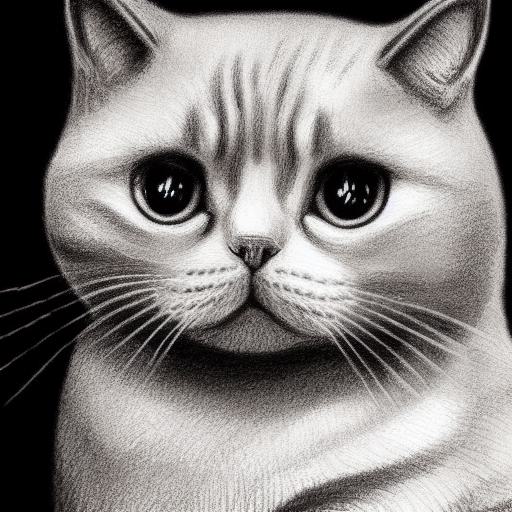Cat pencil sketching
Cat pencil sketching is a popular art form that allows artists to create lifelike and expressive depictions of cats. To create a great cat pencil sketch, artists need to understand the anatomy of cats. Understanding the proportions of the head, body, and limbs, as well as the placement and shape of facial features like the eyes, ears, and nose is essential for creating an accurate and realistic sketch. With this knowledge, artists can capture the unique personalities and expressions of different cats.
Pencil drawing techniques
There are a variety of pencil drawing techniques that can be used to create different effects in a cat pencil sketch. For example, hatching is a technique that involves drawing parallel lines to create shading or texture. Cross-hatching is similar, but involves overlapping lines at different angles. Shading involves using a range of values to create depth and dimensionality. Blending can be used to smooth out lines or create gradients.
Pencil types of pencil sketching
In addition to techniques, artists can also experiment with different pencil types and paper textures to create unique effects in their cat pencil sketches. For example, soft pencils can be used to create smoother and more delicate lines, while hard pencils are better for creating fine details and crisp lines. Different paper textures can also influence the look and feel of a sketch, from rough and textured to smooth and glossy.
What is AI-generated art?
AI-generated art refers to artwork that is created using artificial intelligence algorithms and tools. It allows designers to produce images with speed and ease, while also enabling them to explore diverse styles and techniques. This can be beneficial for crafting distinctive and customized designs. Additionally, it has the potential to enhance inclusivity and expand the scope of artistic possibilities. Applications such as Visual Paradigm Online provide a simple way to integrate AI-generated art into designs.
How to create AI image prompt?
To create an effective AI image prompt for a British shorthair cat, it’s important to consider the individual parts that make up the prompt and how they can influence the image being generated.
The first part of the prompt is “a black and white drawing”. This indicates that the image being generated should be in black and white, which can help to create a classic and timeless feel. Additionally, black and white can be used to create strong contrasts and emphasize the details of the drawing.
The second part of the prompt is “of a British shorthair cat breed”. This specifies the breed of cat that should be depicted in the image. It’s important to consider the physical characteristics of the breed, such as the rounded head, chubby cheeks, and dense coat, when generating the image. This can help to create a realistic and recognizable representation of the British shorthair cat.
The third part of the prompt is “a detailed drawing by Caroline Lucy Scott”. This indicates that the image should be highly detailed and showcase the artist’s skill and technique. This can be achieved through the use of fine lines, shading, and texture. By creating a detailed drawing, the image can convey a sense of depth and dimensionality, as well as capture the unique features and expressions of the cat.
Finally, the prompt includes keywords like “fine art”, “cat portrait”, “cat detailed”, and “detailed portrait”. These terms further emphasize the need for a highly detailed and realistic image that captures the essence of the cat’s breed and personality. They also suggest that the image should be treated as a work of art, rather than simply a representation of a cat.


